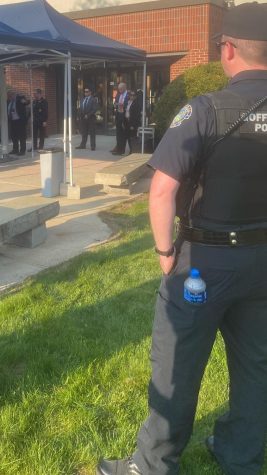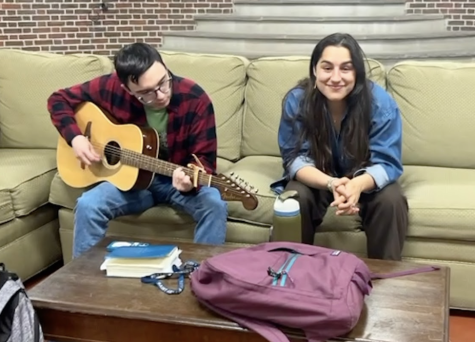Increase in campus sexual assaults alarms Harbor official
Pamphlets and available campus resources for students outside Harbor at Student Center
November 3, 2022
The annual Saint Anselm Security and Fire Safety Report was released on September 14th, and some of its content was shocking. In just one year, from 2020-2021, the number of recorded rape cases jumped from one to sixteen, all of which were on campus. Staff of the Harbor gave the Crier a thorough reflection of their reaction to the report.
Each year, colleges across the country are required to release a campus safety report regarding the findings of campus crime from security. For more information on the report, see Crier story “Annual report reveals new data on sexual assault and liquor violations” published on October 20.
In reaching out to AVERT, Saint Anselm’s Assault Violence Education Resource Team, OVW Project Director Nicole Kipphut shared her professional perspective while reviewing the report.
Her initial reaction to the report was likely similar to most, as she said that “whether it’s one or sixteen sexual assaults on campus, it’s upsetting because one victim is too many.” Any number of cases is concerning, but Kipphut is hopeful that “the increase is an indicator that students are now reporting what is happening to them, which is a good thing.” That indication reflects the entire goal of the college’s initiatives that focus on sexual assault awareness and victims having the courage to speak out is of utmost importance.
Even with the optimism that the goal of empowering victims to speak out is growing, questions about the reports still linger. Why the college is seeing such a stark jump might be a big question in peoples’ minds, but Kipphut has her own theory. “COVID disrupted everyone’s lives starting in 2019 and into 2020 and with [that] meant that socializing decreased to a minimum,” Kipphut said.
With students not allowed to roam around each other’s dorms, or otherwise being sent home, “the socializing, partying, etc., declined dramatically and provided less opportunity for sexual assaults to happen on campus,” Kipphut said. The spike since then is seemingly related to the fact that students are now resuming “a more normal college life experience.”
Why a normal college experience includes sexual assault cases like this may not ever be known, but considering what this sense of “normalcy” has brought about, how can the campus work to ensure the safety of the students? For starters, “all faculty, staff, and students are responsible for the various components of sexual assaults occuring on campus,” Kipphut said. With this task at hand, Kipphut believes that “as a campus we can come together to work towards a safer campus” and it “really is a team effort that requires a lot of planning and support.” It is the Saint Anselm community’s duty to rely on one another for support to help prevent more incidents from occurring, and to support each other when dealing with the incidents that victims have experienced.
Not all survivors are at a state where they are comfortable enough to come forward, and Kipphut knows that “sexual assaults across all colleges nationwide are underreported.” As unpredictable as these cases may be, everyone can use their best efforts to keep fellow students safe. There are several safe outlets for students to speak about their experiences and approach reporting their experiences, some of which include “Health Services and the mental health counselors. The Harbor, Campus Ministry, and access to the YWCA’S advocates.” All of these resources have staff members on campus that you can report to, and their spaces “invite survivors to come forward.”
From Khipput’s perspective, the findings in this year’s report show that there is progress being made in the support that is offered to victims. Also, that the community as a whole can do even more in protecting fellow students. “By engaging more students, faculty, and staff in the awareness, prevention, and response efforts,” campus can become safer for everyone. Get educated, get involved, do your part in supporting victims, and help prevent further sexual assaults from occurring. If you see something, say something.













